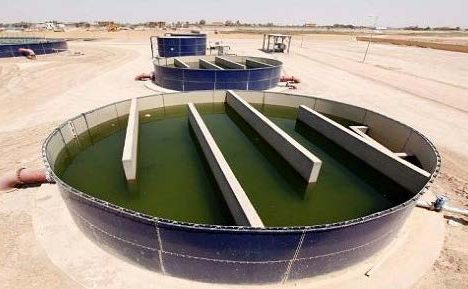Water And Sanitation Works
This section is highly rated as one of the most distinguished water and wastewater projects. It is managed with professional engineering and technical expertise to manage and implement large and complex projects for the public and private sectors , and the ability and capabilities to provide comprehensive solutions and implement diverse and large projects in all areas of purification, water networks, networks and sewage systems:
Sewers are typically pipelines that start with pipes connected from buildings to one or more levels of the main sewer network of underground canals, which carry wastewater to wastewater treatment facilities. Vertical pipes, called manholes, serve to connect the main sewer system to the surface.
Manholes are used to access sewer pipes for inspections and maintenance, and also as a means of escaping gases from sewers. It also facilitates vertical and horizontal angles in other straight pipelines. Drains are generally gravity powered, but pumps can be used if necessary. The most commonly used drain pipe is the SDR-35 (Standard Dimension Ratio 35), with smaller branch pipes connected within a larger mains sewer system.
Sewage water treatment
Wastewater is one of the types of polluted water resulting from various human activities and its multiple uses of water for many purposes. Waste water carries many pollutants left over from human activities. Wastewater treatment is a good and effective treatment that is one of the most important means and methods for protecting the water and terrestrial environment from pollution, as the correct scientific treatment provides the safe and correct disposal of this water and its safe recycling within the ecological system, achieving human safety and preserving his environment and health.

Wastewater treatment stages
Wastewater treatment is a process in which wastewater is purified from impurities, suspended matter , pollutants, and organic matter, until it becomes suitable for nonhuman use, or it can be disposed of in sewers or water bodies without causing pollution. Wastewater treatment goes through several stages, which are as follows:

Initial phase
At this stage, the water is initially treated, so that the water is collected from all places in order to facilitate its treatment. Here, impurities, fats, oils, grease, sand, rocks and large pieces suspended in the water such as pieces of clothing are removed and disposed of, and they are separated from the water through the barrier located in the processing station.
Sand and rock removal stage
At this stage, the sewage is passed through sedimentation basins at a slow speed in order to precipitate its contents of suspended materials such as rocks, sand, dust, and solid pieces.Sometimes some chemicals are used that facilitate the sedimentation process, such as iron or alum salts (which are rather expensive) As an oily substance floats to the surface and is scraped every now and then.
Filter
Here, the sewage is passed to filters designed to filter the water from the solid pieces stuck in them, such as pieces of iron, wood, or glass, or large pieces such as pieces of cloth or paper, so as not to cause disruption or damage to devices during the treatment process.
Sedimentation
Here, the waste water is placed in the primary sedimentation tanks where dust, sand and other impurities suspended in the water are deposited , oils and greases float on the surface to be scraped. The goal of this process is to produce a homogeneous liquid that can be biologically treated to extract the dirt so that it can be disposed of or reused again .
